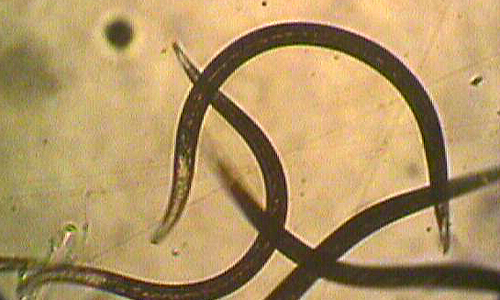Pecan weevil
Damage caused by the Pecan weevil
Both the adult and larval stages of pecan weevil can cause serious damage to pecan nuts. After emerging from soil in the late July through early August, the adults of pecan weevil will move in tree canopy by either crawling on the trunk or directly flying into canopy. Once in the canopy, adults start puncturing and feeding on the young nuts before hardening of shell. These damaged nuts fall off the tree within 2-3 days. While feeding on young nuts, adults mate and females lay eggs by chewing a hole into developing nuts. Eggs hatch inside the nut and hatched larvae immediately starts feeding on a developing kernel until they become mature (fourth stages) approximately within 2-3 weeks. These damaged pecan nuts then fall to the ground causing a tremendous yield and economic loss to pecan industry.
Facts (show all)
- Common names
-
- Pecan weevil, Curculio weevils
- Scientific name
-
- Curculio caryae
- Identification
-
Adults: Adults of pecan weevil are reddish brown in color with a long snout. Presence of small white to orange colored scales on the front wings (elytra) gives them black stripe appearance.
Eggs: Eggs of pecan weevil are small, white and oval in shape.
Larvae/Grub: The larvae (grubs) of pecan weevil are creamy white with reddish brown head capsule.
Pupae: Pupae of pecan weevil are creamy white in color.
- Biology
-
Adults of pecan weevil generally emerge from soil in late July to August and move in tree canopy by either crawling on the trunk or directly flying. Once in the canopy, adults feed on the young nuts and mate. Mated females then lay eggs by chewing a hole into developing nuts. Eggs hatch inside the nut into small larvae that immediately starts feeding on a developing kernel until they become mature (fourth stages) approximately within 2-3 weeks. When the damaged nuts fall to the ground, mature grub will cut a small circular hole in the nut shells and exit the nuts. These larvae then burrow about 4 to 8 cm deep in the soil where they remain for about 1-2 years as dormant stages. After 2 years of dormancy, larvae turn into pupae. Adult weevils emerge from pupae within 3 weeks but they remain as dormant stage in the soil until the end of August. After emerging from soil, adults will move in tree canopy and continue life cycle again in about 2-3 years.
- Organic Control of the Pecan weevil
-
- Following beneficial bugs are used for organic control of Pecan weevil
- Beneficial Nematodes
-
- Heterorhabditis bacteriophora
- Steinernema carpocapsae



